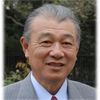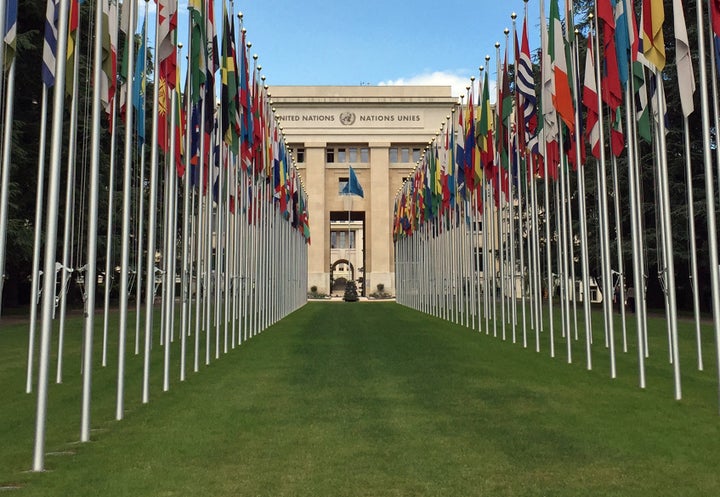
UN Palais des Nations in Geneva
I have traveled the world and met with many men, women and children affected by leprosy in my capacity as WHO Goodwill Ambassador for Leprosy Elimination.
They have different stories to tell. There are those who have lost their work or have been forced to divorce because they have been diagnosed with leprosy. There are those who have been disowned by their families and given no choice but to live in a colony. And there are others who have never tried to leave the colony for fear of discrimination from mainstream society.
Their stories made it clear that leprosy needed to be recognized not only as a medical problem but also as a human rights problem. My heart was set on fixing this grave social injustice. And I started to explore ways in which the plight of people affected by leprosy could be recognized by the international community as an issue of human rights.
When I visited the Office of the United Nations High Commissioner for Human Rights (OHCHR) in Geneva in July 2003, Bertrand Ramcharan, the Acting High Commissioner for Human Rights at the time, expressed an understanding that leprosy is a serious human rights problem, but noted that leprosy had never been put on the table.
In order to raise awareness about leprosy, The Nippon Foundation began organizing a series of seminars during human rights sessions in Geneva. I ensured that persons recovered from the disease would attend the meeting to have their voices heard. But things did not go so smoothly. On one occasion, we reserved a conference room with a capacity of 50, but in the end, the seminar was attended by only ten people. Nonetheless, I repeatedly returned to Geneva, held meetings, and organized small photo exhibitions.
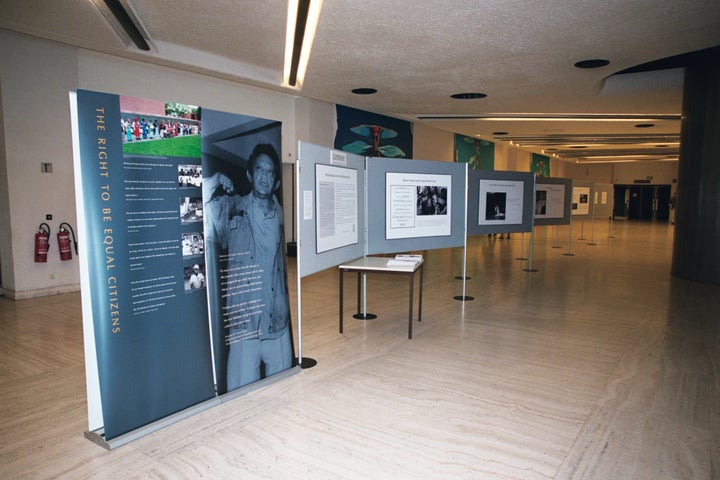
Photo exhibition at UN Palais des Nations in Geneva in August 2003
The year 2004, however, marked a change in awareness. In March that year, I was given the opportunity to make a statement about “Leprosy and Human Rights” at the plenary session of the United Nations Commission on Human Rights (UNCHR). I was allotted three minutes to make the first officially recorded statement on “Leprosy and Human Rights” at the United Nations before 53 nation delegations. I would like to think that this statement was the beginning of a long process to change social awareness of leprosy.
Following up on my oral statement before the UNCHR, The Nippon Foundation continued with our UN-related activities. We held special briefing sessions where those affected by leprosy brought attention to the circumstances and history of discrimination in each country. In August 2004, Soli Sorabjee, who was chairman of the Sub-commission of the UNCHR at the time, was moved by the grave situation in his own home country of India and suggested that the Sub-commission should examine the issue of leprosy-related discrimination. The momentum was building.
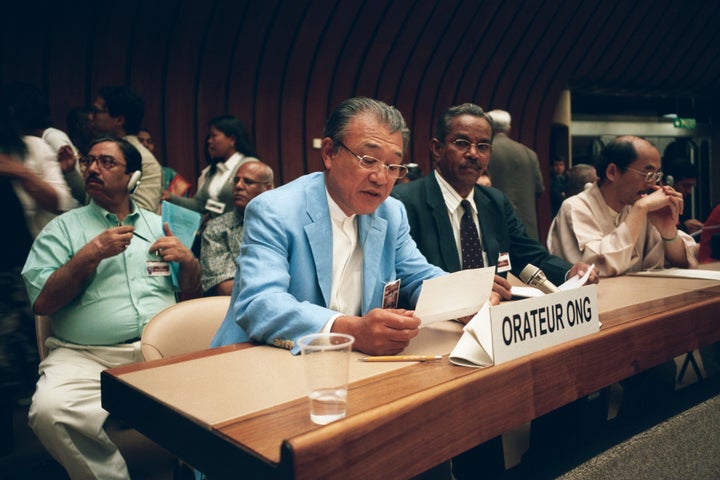
Yohei Sasakawa at UNCHR Sub-commission (currently Advisory Committee) on August 5, 2005
In August 2005, I was again given the opportunity to speak at the Sub-commission of the UNCHR. This time, too, I only had three minutes. Four persons from India, Nepal and Ghana who had recovered from the disease accompanied me and I asked them to make a statement. It was their first experience to speak at such a venue, and they trembled with surprise and tension. After saying a few words, I handed the microphone to one of them, a woman from India. She stood up and said, “I once had leprosy.” It was a powerful testimony that enlightened us to leprosy-related discrimination. I could sense the mood in the hall had changed. One by one, they nervously but resolutely began to talk about the discrimination they had faced. We went over the time limit, but no one stopped them, and everyone remained absorbed.
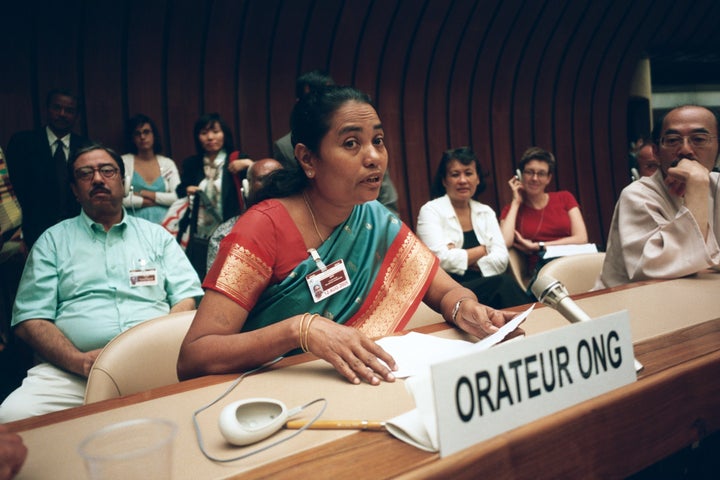
Ms. Nevis Mali from India at UNCHR Sub-commission on August 5, 2005. She has recovered from the disease.
Over the next few months, due to the reorganization of The UN Commission on Human Rights into the Human Rights Council, the situation stalled. Meanwhile, The Nippon Foundation approached the Japanese government to propose “leprosy-related human rights problems” for official deliberation at the Human Rights Council. My role was to explain the proposal and persuade the member countries of the Council. In June 2008, the resolution based on the proposal of Japanese government was unanimously passed by the 59 countries of the Human Rights Council. The resolution called for establishing principles and guidelines to facilitate the elimination of leprosy-related discrimination.
In September 2010, the Human Rights Council unanimously passed a resolution that included principles and guidelines. And in December that year, at the UN General Assembly in New York, the resolution as well as the “Principles and guidelines for the elimination of discrimination against persons affected by leprosy and their family members” proposed by the Japanese government were unanimously adopted by the 193 member countries of the United Nations.
Although these resolutions have no binding power, they were made with resolve. They have given great hope to many person affected by leprosy.
